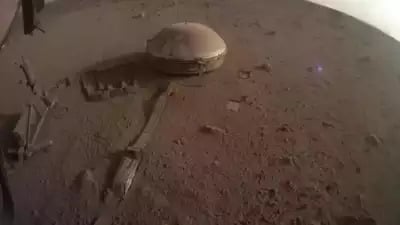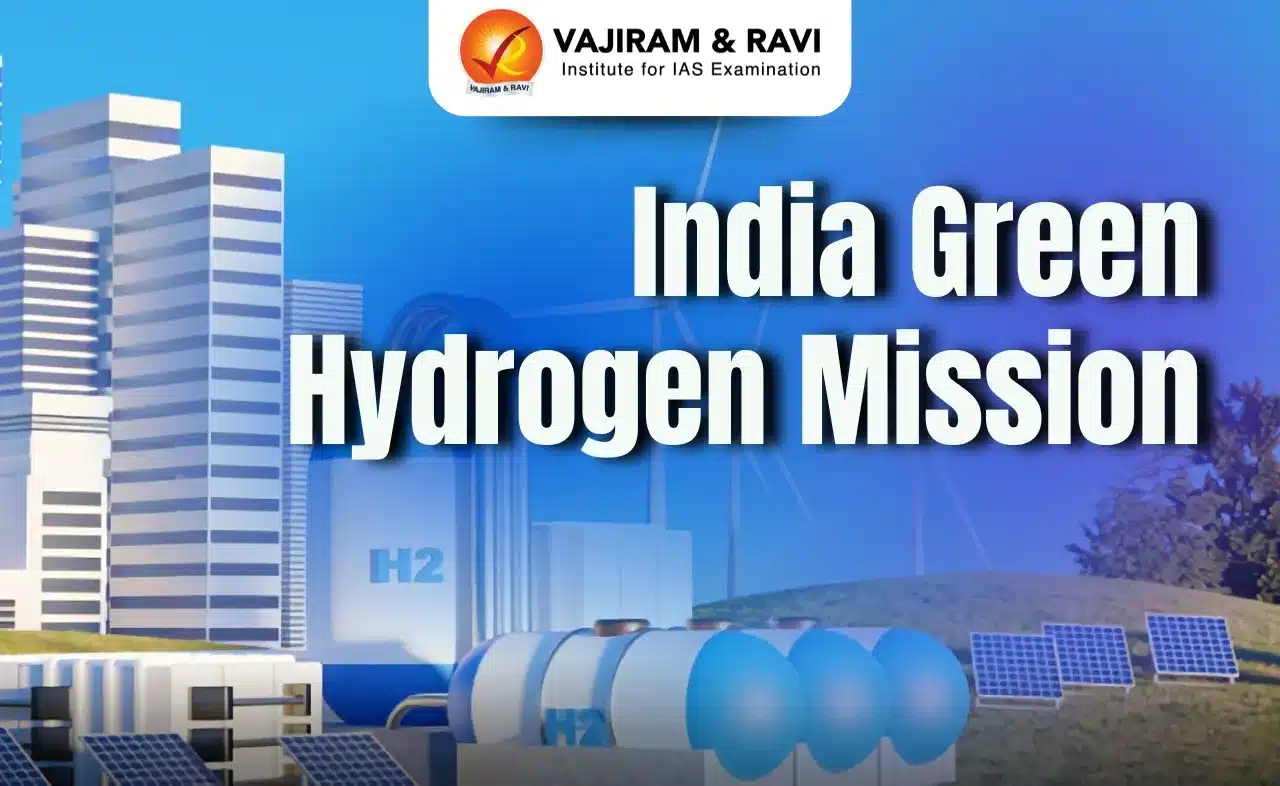What’s in Today’s Article?
- Why in News?
- Background
- Significance of This Finding
- About Tectonic Plates & How They Cause Earthquakes
- When Did Tectonic Plates Develop on Earth?
Why in News?
- Just like on Earth, the surface of Mars sometimes vigorously shakes and unsurprisingly, that is called a marsquake.
- The largest ever marsquake recorded in history happened in 2022 and scientists now finally know the reason behind it.
Background:
- On May 4, 2022, NASA’s InSight lander detected the largest quake yet recorded on Mars, one with a 4.7 magnitude. It is fairly modest by Earth’s standards but strong for Mars.
- Unlike Earth, Mars doesn’t have the same geological process called plate tectonics which usually causes earthquakes.
- Initially, scientists thought that a meteorite impact might be the culprit behind this unusual “marsquake.”
- However, their search for an impact crater did not lead to any findings. This led scientists to a new conclusion – this particular quake was actually triggered by tectonic activity happening within Mars itself.
- It is like rumbling deep inside the planet, giving researchers a better understanding of what makes Mars tremble and move.
- This discovery sheds new light on the seismic activities of Mars.
Significance of This Finding:
- Scientists concluded that the largest marsquake seen by InSight was tectonic, not an impact. This is important as it shows the faults on Mars can host hefty marsquakes.
- The energy released during this particular marsquake was more powerful than all the other marsquakes InSight had recorded combined.
- Unlike Earth, where the outer layer, called the crust, is divided into big plates that move around and cause earthquakes, Mars has a single, unbroken crust.
- The findings reveal that there are still faults that are active on Mars.
- The planet is still slowly shrinking and cooling, and there is still motion within the crust even though there are no active plate tectonic processes going on anymore. These faults can trigger quakes.
- Considering the upcoming human missions to Mars, a greater understanding of Martian seismic activity is pertinent.
- With information from studies like this one, we might understand where it would be safe for humans to land on Mars and where it would be better to avoid a launch.
Tectonic Plates & How They Cause Earthquakes:
- A tectonic plate (also called lithospheric plate) is a massive, irregularly shaped slab of solid rock, generally composed of both continental and oceanic lithosphere.
- Plate size can vary greatly, from a few hundred to thousands of kilometres across; the Pacific and Antarctic Plates are among the largest.
- Plate thickness also varies greatly, ranging from less than 15 km for young oceanic lithosphere to about 200 km or more for ancient continental lithosphere (for example, the interior parts of North and South America).
- How do these massive slabs of solid rock float despite their tremendous weight?
- The answer lies in the composition of the rocks.
- Continental crust is composed of granitic rocks which are made up of relatively lightweight minerals such as quartz and feldspar.
- By contrast, oceanic crust is composed of basaltic rocks, which are much denser and heavier.
- Because continental rocks are much lighter, the crust under the continents is much thicker (as much as 100 km) whereas the crust under the oceans is generally only about 5 km thick.
- Like icebergs, only the tips of which are visible above water, continents have deep “roots” to support their elevations.
- Most of the boundaries between individual plates cannot be seen, because they are hidden beneath the oceans.
- Yet oceanic plate boundaries can be mapped accurately from outer space by measurements from GEOSAT satellites.
- Earthquake and volcanic activity is concentrated near these boundaries.
When Did Tectonic Plates Develop on Earth?
- Tectonic plates probably developed very early in the Earth’s 4.6-billion-year history, and they have been drifting about on the surface ever since-like slow-moving bumper cars repeatedly clustering together and then separating.
- Like many features on the Earth’s surface, plates change over time.
- Those composed partly or entirely of oceanic lithosphere can sink under another plate, usually a lighter, mostly continental plate, and eventually disappear completely.
- This process is happening now off the coast of Oregon and Washington in North America.
- The small Juan de Fuca Plate, a remnant of the formerly much larger oceanic Farallon Plate, will someday be entirely consumed as it continues to sink beneath the North American Plate.
Q1) What is meant by Mantle?
A mantle is a layer inside a planetary body bounded below by a core and above by a crust. Mantles are made of rock or ices, and are generally the largest and most massive layer of the planetary body. Mantles are characteristic of planetary bodies that have undergone differentiation by density.
Q2) What is the difference between Epicenter and Hypocenter?
Epicenter is the location on the surface of the Earth directly above where the earthquake starts. Focus (aka Hypocenter) is the location on the Earth where the earthquake starts.
Source: Scientists reveal source of most powerful marsquake in history | ToI
Last updated on June, 2025
→ UPSC Notification 2025 was released on 22nd January 2025.
→ UPSC Prelims Result 2025 is out now for the CSE held on 25 May 2025.
→ UPSC Prelims Question Paper 2025 and Unofficial Prelims Answer Key 2025 are available now.
→ UPSC Calendar 2026 is released on 15th May, 2025.
→ The UPSC Vacancy 2025 were released 1129, out of which 979 were for UPSC CSE and remaining 150 are for UPSC IFoS.
→ UPSC Mains 2025 will be conducted on 22nd August 2025.
→ UPSC Prelims 2026 will be conducted on 24th May, 2026 & UPSC Mains 2026 will be conducted on 21st August 2026.
→ The UPSC Selection Process is of 3 stages-Prelims, Mains and Interview.
→ UPSC Result 2024 is released with latest UPSC Marksheet 2024. Check Now!
→ UPSC Toppers List 2024 is released now. Shakti Dubey is UPSC AIR 1 2024 Topper.
→ Also check Best IAS Coaching in Delhi

























